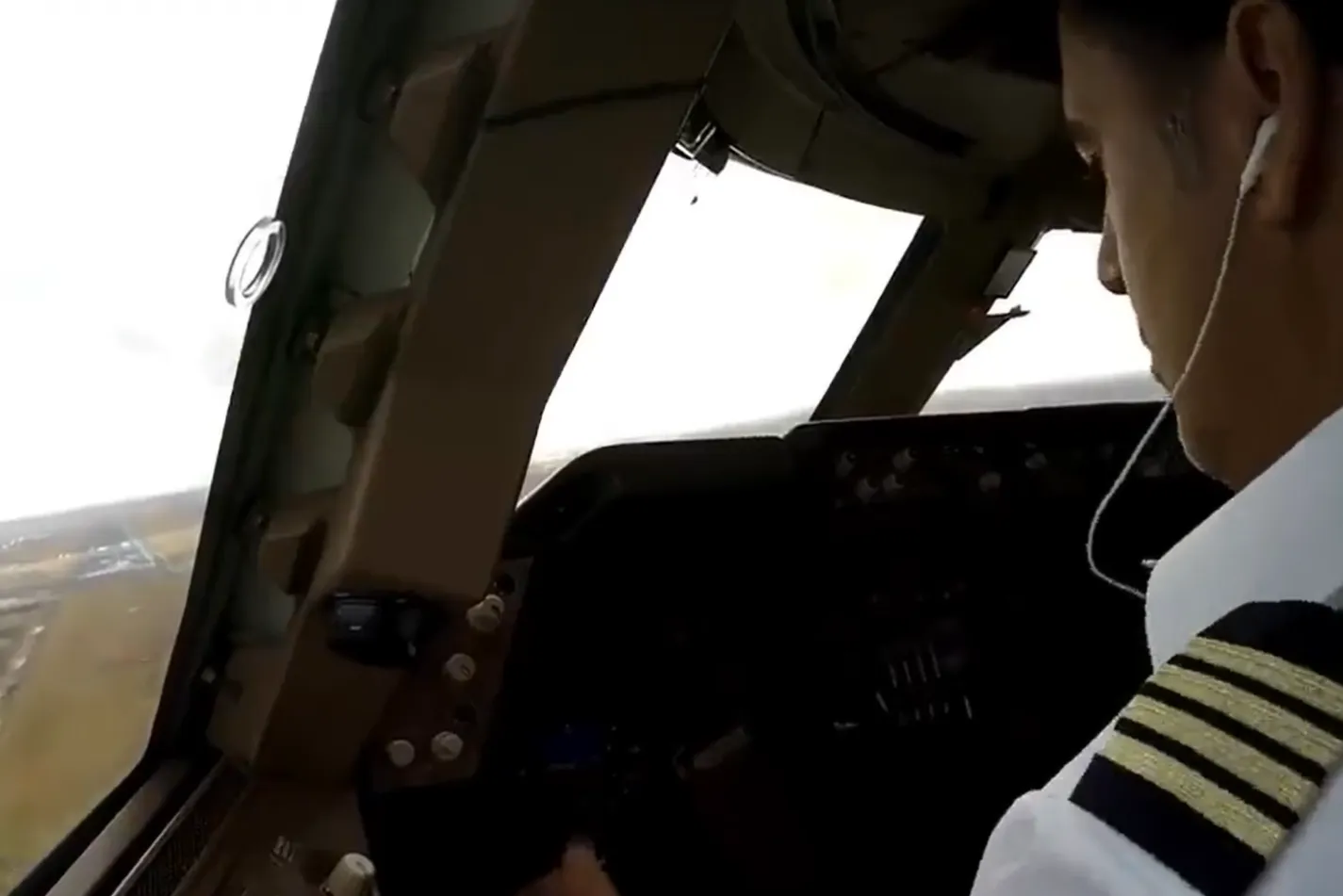
Boeing 747 Captain Battles Crosswinds At Narita
Jan 03, 2023

In a challenging landing at Narita International Airport, a seasoned Boeing 747 captain skillfully navigates strong crosswinds that buffet the aircraft. As the jumbo jet approaches the runway, the captain expertly adjusts the controls, demonstrating precise coordination and experience. The powerful gusts test the limits of both the aircraft and the crew’s proficiency, but the captain remains calm and focused. Passengers feel the aircraft sway, but the captain's steady hands ensure a safe descent. With a final deft maneuver, the massive plane touches down smoothly, showcasing the critical skills required to manage adverse weather conditions in aviation.
The Boeing 747, often referred to as the "Jumbo Jet," is one of the most iconic aircraft in aviation history. Known for its massive size and impressive range, the 747 has been a staple in commercial aviation since its introduction in the late 1960s. Among the many challenges pilots face when flying this behemoth is landing in adverse weather conditions, particularly crosswinds. This article takes a closer look at a Boeing 747 captain's battle with crosswinds at Narita International Airport, a key hub in Japan.
The Challenge of Crosswinds
Crosswinds pose a significant challenge for pilots, especially during landing. A crosswind occurs when wind blows perpendicular to the aircraft's landing path. For large aircraft like the Boeing 747, managing these winds requires skill, experience, and a deep understanding of the aircraft's aerodynamics.
At Narita, the approach can be tricky due to the airport's location and surrounding geography. Pilots must navigate through turbulent air while ensuring a smooth touchdown. The Boeing 747, with its high wing configuration and large surface area, is particularly affected by crosswinds.
Techniques for Managing Crosswinds
When facing crosswinds, pilots employ several techniques to maintain control of the aircraft. Here are some key methods used by a Boeing 747 captain:
| Technique | Description |
|---|---|
| Crab Method | The aircraft is angled into the wind to maintain a straight flight path, allowing for a straight landing approach. |
| Wing Low Method | This involves lowering the wing into the wind to counteract the drift caused by the crosswind. |
| Controlled Descent | Maintaining a controlled descent rate while making adjustments to the flight path is crucial for a safe landing. |
| Rudder Input | Using rudder input helps the pilot maintain directional control during the final approach. |
These techniques require practice and precision. A Boeing 747 captain must be well-trained to execute these maneuvers effectively, ensuring the safety of passengers and crew.
Real-Life Scenario: Narita International Airport
During a recent flight to Narita, a seasoned Boeing 747 captain encountered unexpected crosswinds on approach. The weather conditions deteriorated with gusty winds, making the landing challenging. The captain's experience proved invaluable as he initiated the landing procedures.
As the aircraft descended, the captain employed the crab method to align the aircraft with the runway. Despite the turbulence, he maintained a steady descent rate, ensuring that the passengers remained comfortable. The approach speed was adjusted accordingly, taking into account the wind conditions.
As the airplane neared the runway, the captain smoothly transitioned to the wing low method. This maneuver allowed him to keep the aircraft aligned with the centerline while counteracting the crosswind. The precision required for this landing was critical, and the captain's skill was evident as he guided the Boeing 747 safely onto the runway.
Post-Landing Procedures
Once the aircraft landed, the captain engaged the thrust reversers to decelerate effectively. After safely taxiing to the gate, he conducted a debriefing with the crew, discussing the approach and landing techniques used. This valuable feedback is essential for continual improvement and ensures that all crew members are prepared for future challenges.
In addition, the data gathered during the flight can be analyzed for performance metrics, which are crucial for enhancing training programs for new pilots. Understanding how to manage crosswinds effectively can significantly impact the safety and efficiency of future flights.
Conclusion
The Boeing 747 captain's experience with crosswinds at Narita International Airport highlights the complexities of flying large aircraft in challenging weather conditions. Mastering techniques like the crab and wing low methods is essential for ensuring a safe landing. As aviation technology continues to evolve, training and experience remain the cornerstones of safe flying practices.
Whether you're a seasoned pilot or an aviation enthusiast, understanding the dynamics of crosswind landings adds depth to your appreciation of the skills required to operate the Boeing 747. Each landing is a testament to the dedication and expertise of the flight crew, showcasing their ability to navigate the skies safely.
Related Articles

Explore Thailand: The Best Islands to Visit for Paradise, Adventure, and Relaxation

The Ultimate Guide to the Best Islands in Thailand for Your Next Getaway

Do babies need passports? How to get a passport for a newborn

How to get a U.S. passport fast: here’s how to expedite the process

What is Mobile Passport Control: 5 reasons why you should use it

SENTRI vs. Global Entry: A detailed guide

Do you need a passport to go to the Bahamas? Let’s find out

Do you need a passport to go to Mexico? A detailed guide

Do you need a passport to go to Canada? We got the answer

Do You Need a Passport for a Cruise: An Essential Travel Guide

Booster Seat Requirements: All the Rules to Follow in Your Rental Car

What Are the World’s Most Powerful Passports, and How Does Yours Rank?

How to Take a Passport Photo at Home: A Helpful Guide

You've got to have heart! Southwest's new livery

Your opinion: Should water be free on low cost carriers?

Young women bolder than guys as solo travellers
